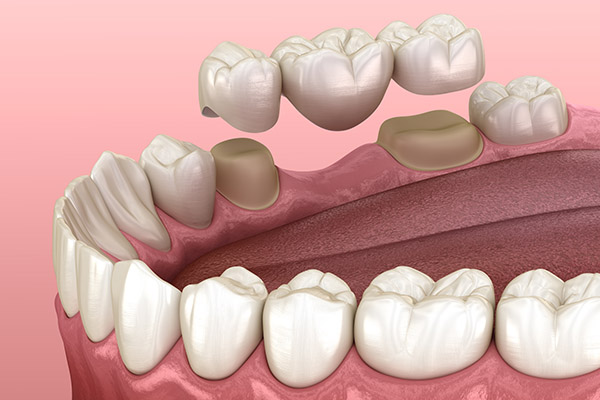Dental Bridge Options for Replacing Missing Teeth
 Dental bridges are one of the most preferred options for replacing missing teeth. As the name suggests, dental bridges bridge the gaps left by one or more lost teeth. This is a guide to your dental bridge options, types, and benefits.
Dental bridges are one of the most preferred options for replacing missing teeth. As the name suggests, dental bridges bridge the gaps left by one or more lost teeth. This is a guide to your dental bridge options, types, and benefits.
Dental bridge
A dental bridge is a prosthetic bridge that replaces one or more missing teeth. It is one of the options for replacing missing teeth. A dental bridge is built up of crowns on each side of the missing tooth or teeth that support the pontic (fake tooth).
If you have missing teeth, dental bridges can assist. Severe tooth decay, gum disease, and injury are the most common reasons for losing teeth. In addition, you might perhaps have been born with missing teeth because of a congenital defect. Regardless, you'll need healthy teeth on each side of the missing teeth to receive a dental bridge.
Types of dental bridges
- Traditional bridges – A traditional dental bridge connects two teeth. A typical dental bridge comprises dental crowns cemented onto each of the abutment teeth to hold an artificial tooth or teeth in place. A conventional bridge is the most popular type of dental bridge when you have original teeth on the sides of the gap created by your lost tooth.
- Cantilever bridges – The pontic in a cantilever dental bridge is kept by a dental crown glued to only one abutment tooth, like a regular bridge. However, a cantilever bridge requires one natural tooth next to the missing tooth gap.
- Maryland bonded bridges – Maryland bonded bridges are porcelain, porcelain fused to metal, plastic teeth and gums are supported by a metal or porcelain framework, metal or porcelain wings are usually glued to your natural teeth on only one side of the bridge.
- Implant-supported bridges – As the name indicates, are supported by dental implants rather than crowns or frames. For each missing tooth, one implant is surgically implanted, and these implants keep the bridge in place. A pontic may be hung between two implant-supported crowns if one implant isn’t practicable for each lost tooth.
Advantages of a dental bridge
Dental bridges have a lot of benefits. First, they get your smile back to how it used to look. Also, they usually restore the ability to talk, as missing teeth can make it difficult to pronounce words correctly. Moreover, they regain the ability to chew food thoroughly. They also prevent neighboring teeth from moving into the vacant area, creating biting issues and other problems.
Am I eligible for a dental bridge?
A dental bridge is not suitable for everyone. However, some factors indicate dental bridge is the best options for replacing missing teeth. Some of those factors may include: more than one tooth is missing, you're overall healthy, and can keep the dental bridge looking its best by practicing good oral hygeine.
Related Posts
Implant overdentures may be the best investment when it comes to options for replacing missing teeth. Although you have many options for replacing missing teeth, implant overdentures may be the right option for you. Implant overdentures are known as “snap-on dentures” because the denture connects to the implant via a snap assembly in which a…
If you are new to dentistry, it may be difficult for you to decide on your options for replacing missing teeth. There are many options available, but here are some of the most common ones that can help replace missing teeth due to tooth decay:Dental implants are one of the most long-lasting options for replacing…
Partial dentures are one of the most cost-friendly and effective options for replacing missing teeth. They can either be removable or fixed dentures. This is a guide on what partial dentures are, their benefits, and how to care for them.Partial dentures, commonly known as partials, are artificial replacement teeth that replace a patient's missing teeth.…
